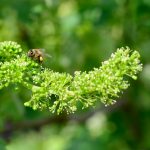Zonation is a study involving numerous disciplines and whose purpose is to optimise the interaction between the grapevine and its cultivation environment. It is essential to understand the factors in that particular environment that can influence the quality of the products, in order to be able to manage them more effectively and identify the appropriate varietal and clonal choices of a grape variety, as well as the most suitable cultivation methods.
Today, the consumer expects and is looking for quality, originality and typicity.
It is very difficult to compete internationally without these factors.
However, it is difficult to define the quality of a wine, even if it can be broken down into “perceived quality” by the consumer and “intrinsic quality” of the product. A broad scenario opens up for the latter, highlighting how this aspect depends on factors that can be attributed to the grapevine and the natural production environment. The “acquired” quality is also important, and is determined by the technological factors related to grape production and processing.
It is the interaction between the grapevine and the environment that has the biggest impact on the quality.
That is why in distinct areas it is possible to obtain wines with the same level of quality and at the same time different from one another, thanks to the expressive potential of a grapevine in certain natural conditions, something the French call terroir. The French themselves have not stopped at this, but have introduced another even more specific concept, that of climat, namely a small vineyard site that has been carefully marked out. Climat is a set of definitions that together make a territory, vineyard and therefore a wine quite distinctive.
Once this aspect has been defined, it is fundamental to study how a variety adapts to the climate, the soil, and therefore to what extent it attains its full expression in that setting. However, we must also evaluate the ability, in terms of production, of the variety to react to the particular environmental conditions.
The instrument that permits this analysis and optimisation strategy is “zonation”. This is the study of a wine-growing area through an approach involving the plurality of factors that make up a terroir.
The results produced by zonation can be used as technical and managerial support to improve the quality of the product, making it possible for it to have characteristics that are recognised as unique throughout the world.
In fact, a zonation study gives rise to the mapping of the environmental situations of the various terroirs of a wine-growing area and a wealth of vegetative-productive information about the vine varieties. The same zonation can go so far as to define the so-called “Vocational units”, sound sources of information on the responses of the grapevine in each homogeneous area of the territory. This is how the “map of the territory” was created, which provides the handbook on soil management area by area, on the best plant material to be planted, on the oenological objectives set for the territory in a broad sense. It is in this “natural” way that the areas most suited to the production of quality wines are differentiated from those less suitable. Hence the courage of zonation!
In this way, oenologists themselves abandoned their historical role by becoming interpreters of the typicality produced in a terroir. Without taking into consideration the effects on marketing, since it allows the “autochthonous environmental elements” that characterise a specific production site to emerge. Then it really would be possible to set up a market and communication policy.
Until then, we will continue to talk only about native vines, claiming rights that do not exist!
Tenuta Liliana Staff





